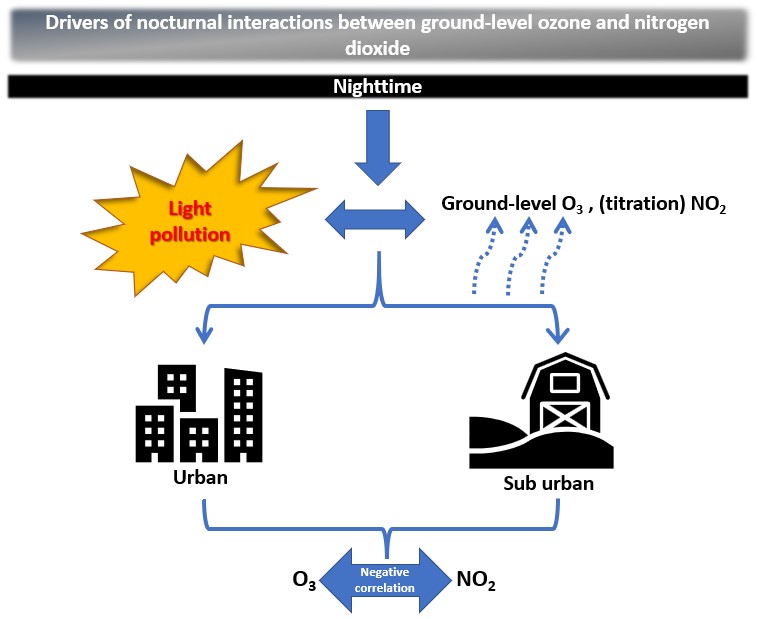
This study analyses nighttime (7 p.m. to 6 a.m.) light pollution effects on ground-level ozone production in urban and sub-urban sites in Malaysia. In the absence of solar radiation, no photochemical reaction will occur during nighttime, resulting in zero readings of ground-level ozone (O3). O3 and nitrogen dioxide (NO2) data collected in 2020 were analysed to assess time series and diurnal variability at each site and between sites. The highest nighttime mean O3 concentration is Minden (60 ppb); meanwhile, for nighttime mean NO2 concentrations, the highest is Klang (43 ppb). The results show that sub-urban experienced higher O3 variations compared to urban areas. The monthly mean nighttime O3 and NO2 in urban and suburban areas display a gradual increase in O3 and NO2 variations from March to April, followed by a decreasing trend in the mid of the year. These variations in monthly air pollutants are related to the MCO, CMCO, and RMCO in Malaysia during 2020. Putrajaya (sub-urban site) was the darkest site (average lux: 20) for the whole dataset. In contrast, Minden (sub-urban site) was recorded as the brightest site with maximum light pollution (average lux: 70). The relationship between O3 and NO2 shows a negative correlation during nighttime for urban and suburban sites. Light pollution can reach levels that might affect nocturnal O3 and NO2 concentrations; therefore, the long-term variability of light pollution is essential for air pollution studies.
Total file downloads: 21